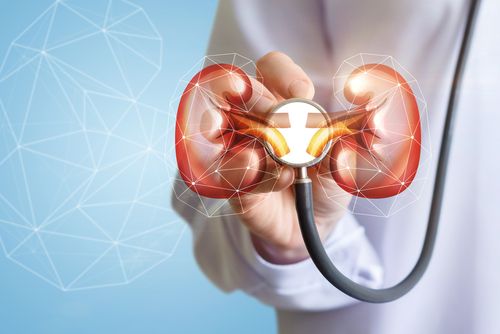What Types of Dialysis Are Given to People with aHUS?
Written by |

Atypical hemolytic uremic syndrome (aHUS) is a rare disease characterized by the formation of blood clots in the small blood vessels of the kidneys. The kidneys filter waste from the bloodstream and release it into the urine. The blood clots caused by aHUS can affect kidney function and lead to kidney damage.
About 68% of aHUS patients need dialysis, which filters the blood to remove excess waste, salt and extra fluids when the kidneys cannot.
There are two types of dialysis: hemodialysis and peritoneal dialysis. Your doctor will discuss both types of dialysis with you and help determine which type is best for you.
What is hemodialysis?
In hemodialysis, the dialysis machine removes your blood and runs it through a filter that cleans out waste. The machine then returns the blood to your body. The process is continuous and takes a few hours. You will need to have hemodialysis a few times each week. Most patients go to a hospital or clinic for the procedure.
What is peritoneal dialysis?
Peritoneal dialysis uses the lining of the abdomen, called the peritoneum, as the filtering device. Doctors perform a small surgical procedure to make an incision in your abdomen and place a small tube called a catheter in this incision. You need to pump a fluid, a cleaning solution called dialysate, into your abdomen through the catheter.
This fluid absorbs waste from the small blood vessels in the abdomen before you drain it again, and restart the procedure. Each “fill” takes about 40 minutes, and you should repeat the “drain and refill” process for four to six hours (either by yourself or via a machine).
Patients are generally on one of two schedules, either several times a day, or most of the night every night. You can perform peritoneal dialysis at home in a clean and dry place.
What are the risks of dialysis?
Like any medical procedure, dialysis has potential complications.
Patients have to have a port for blood or fluid exchange, and this may become infected, or torn or damaged causing bleeding.
Many dialysis patients experience muscle cramps, though the cause of this is not clear. Some develop inflammation in the membrane that surrounds the heart (pericarditis).
The fluid used for peritoneal dialysis contains dextrose, a sugar, so many patients experience weight gain while on this type of dialysis. Hernia is also more likely, as this type of dialysis can exhaust or overstretch the muscles of the abdomen. Patients undergoing peritoneal dialysis may sometimes need to switch to hemodialysis. If peritoneal dialysis isn’t working well enough for you, your doctor will discuss a possible change.
Last updated: April 25, 2020
***
AHUS News is strictly a news and information website about the disease. It does not provide medical advice, diagnosis, or treatment. This content is not intended to be a substitute for professional medical advice, diagnosis, or treatment. Always seek the advice of your physician or other qualified health provider with any questions you may have regarding a medical condition. Never disregard professional medical advice or delay in seeking it because of something you have read on this website.




